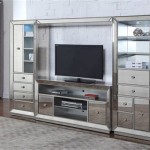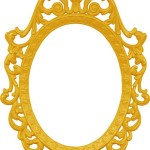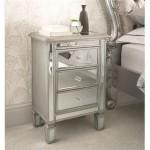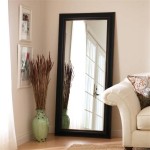How to Hang a Heavy Mirror on Plasterboard
Hanging a heavy mirror on plasterboard presents a unique set of challenges compared to hanging lighter objects on solid walls. Plasterboard, also known as drywall, gypsum board, or sheetrock, is a relatively weak material and is not designed to support significant weight on its own. Attempting to hang a heavy mirror using standard nails or screws directly into the plasterboard is almost guaranteed to result in failure, causing damage to the wall and potentially breaking the mirror. Therefore, employing the correct techniques and hardware is critical to ensure the mirror is securely and safely mounted.
The weight of the mirror is the primary factor determining the appropriate hanging method. While small, lightweight mirrors (under 5 lbs) may be hung using specialized plasterboard anchors designed for lighter loads, heavier mirrors necessitate more robust solutions that distribute the weight effectively or connect directly to the wall studs behind the plasterboard. Understanding the limitations of plasterboard and utilizing the proper installation techniques are crucial for a successful and safe outcome.
Identifying Wall Studs
One of the most reliable methods for hanging a heavy mirror on plasterboard is to attach it directly to the wall studs. Wall studs are vertical wooden or metal beams within the wall that provide structural support. They are typically spaced 16 or 24 inches apart. Fastening the mirror's hanging hardware to these studs provides a secure and stable anchor point, capable of supporting significant weight.
The first step is to locate the studs. A stud finder is the most accurate and efficient tool for this purpose. Electronic stud finders use sensors to detect changes in density within the wall, indicating the presence of a stud. These devices typically have an indicator light or audible signal that alerts the user when a stud has been detected. It is important to calibrate the stud finder according to the manufacturer's instructions before use to ensure accurate readings.
If a stud finder is unavailable, alternative methods can be employed, although they may be less precise. One method involves tapping on the wall. A hollow sound generally indicates that the area is between studs, while a more solid sound suggests the presence of a stud. However, this method requires practice and a good ear to differentiate the subtle changes in sound. Another method involves looking for visual cues, such as the locations of electrical outlets or switches. These fixtures are typically attached to studs, so the stud is likely located nearby. The location of baseboards can also sometimes indicate stud placement, as they are often nailed into the studs.
Once a potential stud location is identified, it is advisable to confirm its presence by driving a small nail or screw into the wall. If the nail or screw encounters solid resistance, a stud is likely present. If it passes through easily, the area is likely between studs. This should be done discreetly, as the hole will need to be filled later if a stud is not found.
After locating and confirming the studs, mark their precise locations on the wall with a pencil. This will serve as a guide for attaching the mirror's hanging hardware. Measure the distance between the hanging brackets on the back of the mirror and transfer these measurements to the wall, ensuring that the marks align with the identified stud locations. Use a level to ensure that the marks are perfectly horizontal, as this will ensure that the mirror hangs straight.
Using Heavy-Duty Plasterboard Anchors
If the mirror's hanging hardware does not align with the wall studs, or if accessing the studs is not feasible, heavy-duty plasterboard anchors provide an alternative solution. These anchors are designed to distribute the weight of the mirror across a larger area of the plasterboard, providing a more secure hold than standard screws or nails. However, it is crucial to select anchors with a weight rating that exceeds the weight of the mirror by a significant margin to ensure safety and prevent failure.
Several types of heavy-duty plasterboard anchors are available, each with its own installation method and weight capacity. Toggle bolts are a popular choice for hanging heavy items on plasterboard. They consist of a bolt and a spring-loaded wing that expands behind the plasterboard, providing a large bearing surface. Molly bolts are another option, which work by expanding a sleeve behind the plasterboard as the bolt is tightened. Self-drilling anchors, also known as screw-in anchors, are designed to be screwed directly into the plasterboard without pre-drilling a hole. These anchors are generally suitable for lighter loads than toggle bolts or molly bolts, but they are easier to install.
When selecting plasterboard anchors, carefully consider the weight of the mirror and the manufacturer's weight rating for each type of anchor. It is always better to err on the side of caution and choose anchors with a higher weight capacity than is strictly necessary. Also, consider the thickness of the plasterboard, as some anchors are designed for specific plasterboard thicknesses.
Before installing the anchors, use a level to ensure that the mirror will hang straight. Mark the desired location of the mirror on the wall, and then use a pencil to mark the locations of the anchor holes. If using toggle bolts or molly bolts, drill the appropriate size hole for the anchor according to the manufacturer's instructions. For self-drilling anchors, simply screw the anchor directly into the plasterboard at the marked location.
Once the anchors are installed, attach the mirror's hanging hardware to the anchors using screws that are appropriate for the anchor type. Ensure that the screws are tightened securely, but avoid over-tightening, as this could damage the plasterboard or the anchor. Double-check that the mirror is level before fully releasing it.
Ensuring Proper Installation and Safety Measures
Regardless of the chosen hanging method, proper installation and safety measures are paramount. Incorrect installation can compromise the stability of the mirror and potentially lead to accidents. Safety glasses should be worn to protect the eyes from dust and debris during drilling. Gloves can also provide a better grip and protect the hands.
Prior to drilling into the wall, it is essential to check for the presence of electrical wires or plumbing pipes. Using an electronic wire and pipe locator can help to avoid damaging these utilities. If there is any uncertainty about the location of wires or pipes, it is best to consult with a qualified electrician or plumber.
When drilling into plasterboard, use a drill bit that is appropriate for the anchor type and the thickness of the plasterboard. Avoid applying excessive pressure, as this can cause the drill bit to slip or damage the plasterboard. Drill slowly and steadily to create a clean and accurate hole.
After installing the mirror, periodically check the stability of the hanging hardware and the anchors. If any signs of loosening or damage are detected, take immediate action to address the issue. This may involve tightening the screws, replacing the anchors, or reinforcing the wall. Regular inspection and maintenance can help to prevent accidents and ensure that the mirror remains securely mounted.
For particularly large or heavy mirrors, it may be advisable to seek professional assistance with the installation. Experienced handymen or contractors have the knowledge and tools necessary to ensure that the mirror is safely and securely mounted. They can also provide advice on the best hanging method for a particular situation.
Finally, consider the environment in which the mirror is being hung. In high-traffic areas or areas where the mirror is susceptible to being bumped or knocked, consider using additional safety measures, such as safety cables or restraints. These measures can help to prevent the mirror from falling and causing injury in the event of an accident.

How To Hang A Heavy Picture On Plasterboard Wall

Hang A Mirror On Plasterboard Wall Soraya Interiors
How To Hang A 100 Pound Mirror On Drywall Quora

How To Hang A Mirror On Plasterboard Wall Soraya Interiors

Gripit Review How To Hang A Heavy Picture On Plasterboard Wall 2

How To Hang A Large Or Heavy Mirror

How To Hang A Heavy Mirror

How To Hang A Very Heavy Picture Or Mirror The Best

How To Hang A Very Heavy Picture Or Mirror The Best

Hanging A Mirror On Plasterboard Wall Howto








